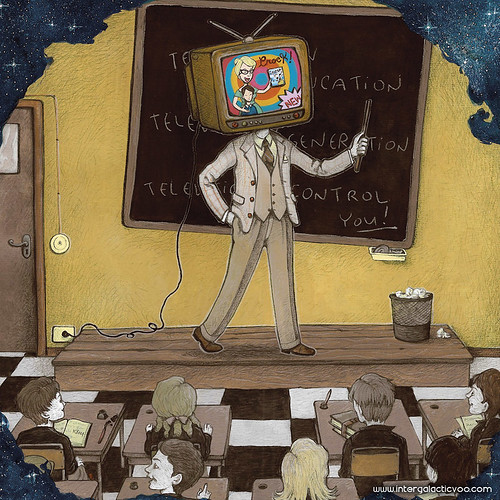Spoonfeeding cultural and educational programs – might happen, with a price

A liberal lawmaker drafted a bill that, if passed into legislation, will force generalist TV stations to broadcast 120 minutes of cultural and educational programs a week, while news-oriented TV stations will have to broadcast 30 minutes a week of such programs.
The bill amends current Audiovisual Law (504/2002) and benefits from the support of the National Audiovisual Council.
According to the draft law, cultural or educational programs are musical programs (concerts, classical music recitals, music history programs that present the life and work of Romanian or foreign composers, interviews, musical events reviews, opera performances and other shows focused on classical music), fine arts (painting, graphics, photography and others) and decorative arts (ceramics, design, glass and metal works), literature, theater, cinema, ballet, architecture, Romanian popular culture (traditions, Romanian popular music, shows about Romanian village civilization), European popular culture, history and science.
Now, those are the kind of programs that usually come in formats that would probably satisfy grandma, but wouldn’t appeal to the modern public. Nobody will watch something that is not dynamic. So the first thing a TV station should think about, if the bill ever becomes law, is how to wrap this kind of shows in an attractive format that would actually gain some interest from the public. After all, you can always find content on culture and education online, when you want and in a friendly form. So the challenge of beating the internet is quite hard, if not impossible.
All in all, the initiative is not bad, considering the public needs to be educated. And this usually is a mission assumed by public state-owned television in normal countries, because they are the ones financed by the state from taxpayer money. For them, broadcasting cultural and educational programs is mandatory through their public service mission. For the rest, commercial TV stations and private news channels, this is more than anything a matter of common sense, but not something you can force upon them.
The main difference between state-owned TV stations and private ones is the first are publicly financed, from the state budget, and do not have to worry that much about ratings and advertising revenues as, at the end of the day, they get money anyway. And I never ever heard about a state-owned TV closing.
Commercial TV stations, on the other hand, depend on advertising for revenue and to be able to pay their employees at the end of the month. The Romanian TV industry has been hit hard in the past couple of years by the economic crisis. Advertising budgets shrunk incredibly or they downright went missing in action. In these conditions, TV stations had to make dire compromises. As all over the world, reality shows and “monkey” shows are the ones that save the day in such situations and their content is usually exactly what the public demands, not what should be on the screen.
For example, when you turn on the TV, you can zap through the different channels for quite a while before you find something that is even remotely interesting. Or you go directly to Discovery Channel or Animal Planet or National Geographic because their documentaries are nice and interesting. And they’re made in a certain way.
Now, when it comes to Romanian TV stations, they are forced to obey the public’s demands, because they need high ratings to survive. And tell me the average Joe will not switch to a different channel if a TV station spoonfeeds him Chopin and Vivaldi (although they are quite accessible for general public) when all he cares about is football and gossip.
Besides average Joe, think of advertisers. Advertisers look for ratings like relic hunters look for the Holy Grail and that is because they can reach to a huge public if they put their commercials during shows with high ratings. Now give me one example of Romanian advertiser that will willingly place its ads in a cultural or educational program, unless it supports that program as a part of its CSR strategy. I don’t think any will be mentioned. Because, beyond everything, advertisers use commercials to sell. Period. No other reasons.
Of course, there can be another way. Advertising could support cultural and educational programs. But that is taboo in Romania now. TV stations and the media in general avoid associating themselves with brands in order to communicate different subjects to the public. There were a few attempts though and more might follow. Eventually, if the public is interested to see a series of documentaries on the state of Romania’s environment, it will eventually stop caring that much that X, Y or Z brand financed the program and will stop suspecting those brands of rigging the content to their own benefit.
Personally, I don’t think that is going to happen any time soon because managers don’t have big enough balls to make decisions and assume responsibility for them. And because they didn’t read and think about some awesome article published by Newsweek a while ago (unfortunately I do not find the link anymore) , which explained that media needs to adapt in order to survive in case classic advertising will no longer be the main source of revenues.
@AdHugger







